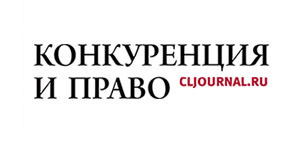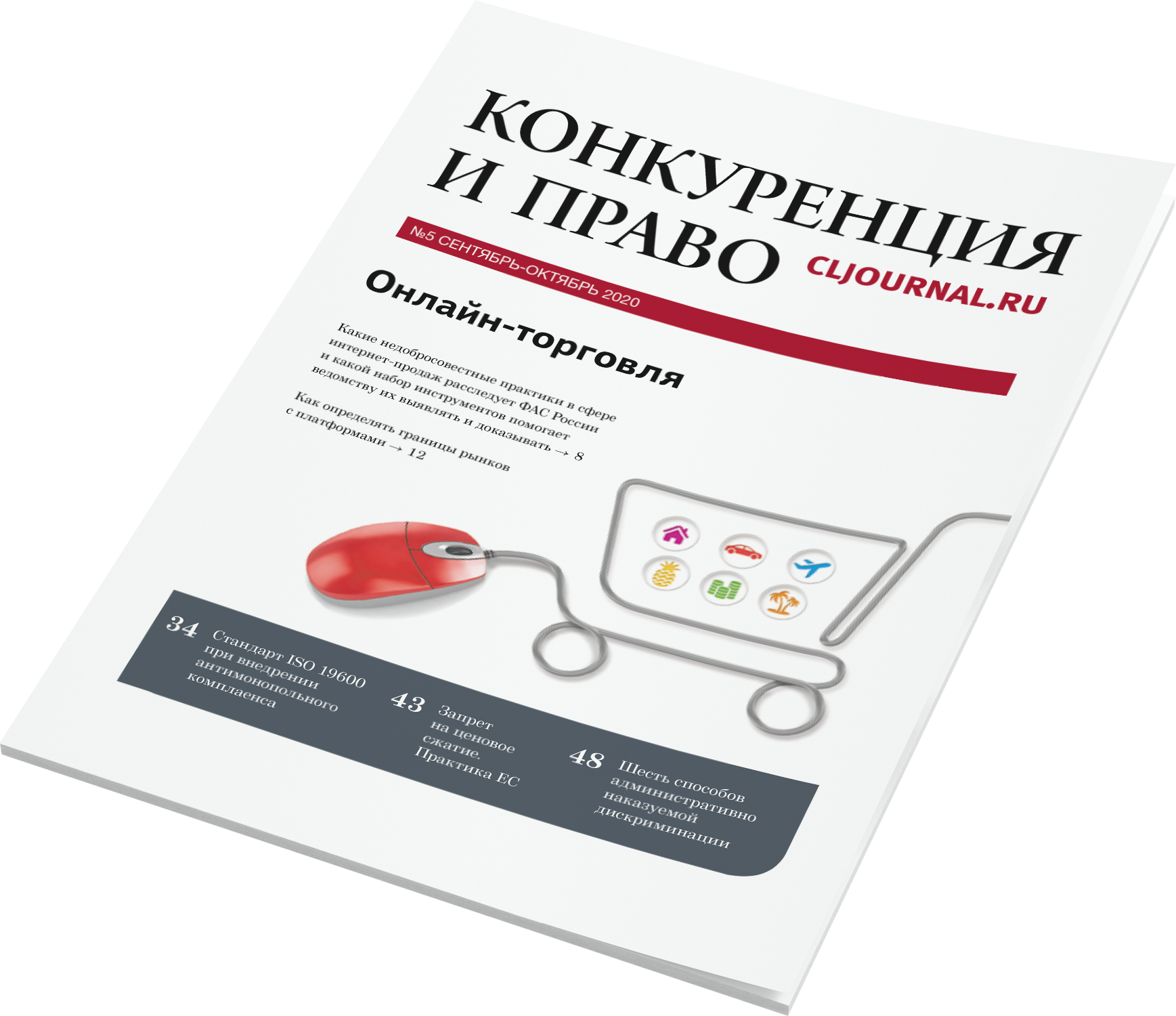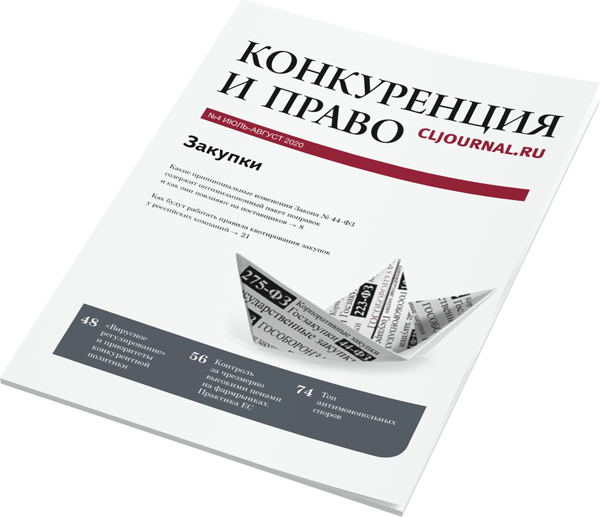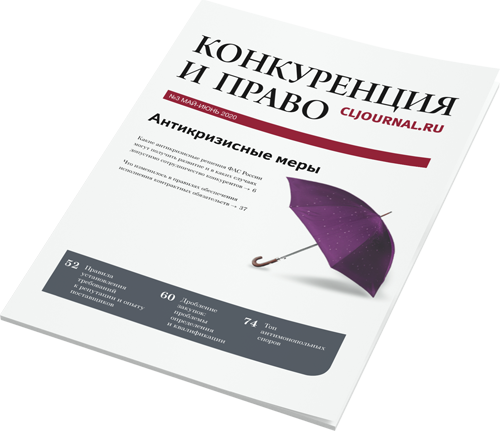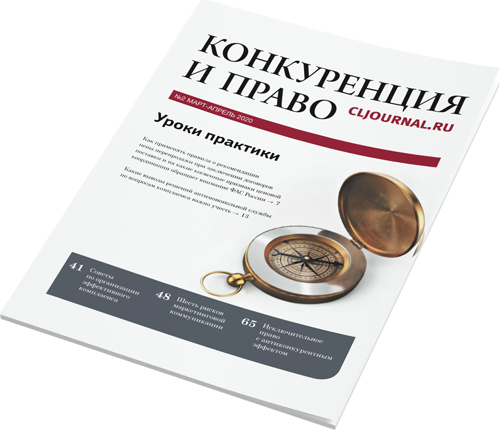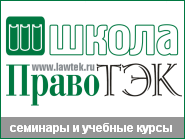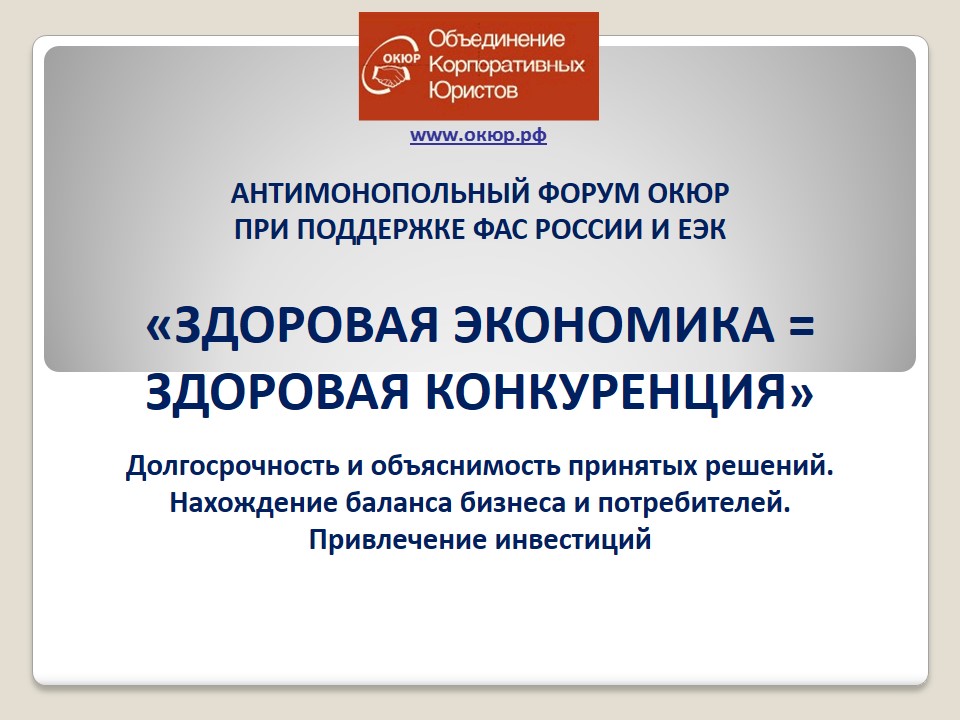|
||||||
 Published in Competition
and Law journal, Issue 4, 2019
Elena Sokolovskaya, Chief Expert of Competition and Law journal Thirteen years ago, simultaneously with Federal Law No. 135-FZ dated 26 July 2006 “On the protection of competition” taking effect, the institution of collective dominance was introduced. It aims to solve issues arising on oligopolistic markets. Today, collective dominance is applied more widely in Russia than in the EU, where it is used for a prospective analysis within assessments of economic concentration transactions. Ironically, in the U.S.A., the homeland of antitrust regulation, there is no such tool at all. An examination of Russian practice casts doubt on the model of how this institution is applied.
Oligopolistic markets are noted for a low level of competition among a few participants, who are mutually dependent when devising their market strategy. This results in higher prices for commodities as compared with a regular competitive environment. Before the concept of collective dominance was introduced, the main problem was that the traditional bans on the abuse of individual dominance as well as on cartel agreements and concerted actions did not allow the regulatory authorities to take action to the fullest extent with respect to the participants of oligopolistic markets. The shares of the players on such markets were often insufficient to establish individual dominance; accordingly, it was impossible to classify the actions undermining competition in terms of each participant abusing its own position. For the first time ever, this concept was applied in Russia in 2008 in the case of TNK BP Holding OJSC. The FAS of Russia identified the collective dominant position of a number of major oil companies and found them guilty of establishing monopolistically high prices. However, in doing so, the regulating authority relied only on the quantitative criterion and did not examine the qualitative indicators of the market. In their subsequent practice, the FAS of Russia and courts adopted this biased approach to other similar cases. The concept of collective dominance is also often used to treat the individual actions of a single company as an abuse of a collective dominant position, which is at odds with the economic rationale of this institution. For such an offence to be imputed, collective dominators should jointly perform their actions in relation to their competitors. A standalone company has no opportunity to influence competition in a decisive way: its share does not allow it to abuse its market position. In late 2018, Clarification No. 15 “On liability imposed on business entities recognised as exerting collective dominance for abusing their dominant position” was published (approved by the Presidium of the FAS of Russia on 24 October 2018). This document seeks to solve some practical issues pertaining to the concept of collective dominance. For instance, the Clarification obliges the antitrust body and its regional departments to investigate and use not only quantitative but also qualitative criteria of the commodities market in question and to analyse it in compliance with the FAS of Russia's Order No. 220 “On approving the Procedure for analysing competition on the commodities market” dated 28 April 2010. We believe
that the usage of this model of the institution of collective dominance in
Russian practice has led to declining standards of proving other offences (such
as cartels and concerted actions). This casts serious doubts on the feasibility
of its existence. 29 июля 2019 г.
|
|

